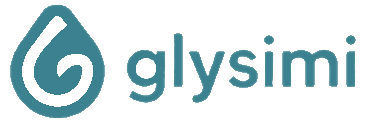What is Time-in-Range
Time in Range (TIR) is the percentage of time a person with diabetes spends with their blood glucose levels within a target range, typically between 3.9 and 10 mmol/L (70–180 mg/dL). It reflects how often blood sugar stays at healthy levels throughout the day and night.
Table of Contents
Time-in-Range (TiR) is important because it captures daily fluctuations in blood glucose — including highs and lows — providing a clearer picture of blood sugar control than traditional measures like HbA1c, which only shows average glucose over months and misses short-term variations.
Spending more time in range is linked to better energy, mood, and quality of life, and research suggests it reduces the risk of diabetes complications, such as eye, nerve, and heart damage.
With modern tools like CGM , people can track Time In Range in real time, helping them understand how factors like food, exercise, medications, and stress affect their glucose levels, allowing for more precise diabetes management
Treatment Goals
According to recent data and expert guidelines, the official diabetes treatment goal is to achieve at least 70% time-in-range (TIR), meaning spending 70% of the day with blood glucose between 3.9 and 10 mmol/L (70-180 mg/dL).
However, most people with type 1 diabetes currently do not reach this goal.
- Studies in youth with type 1 diabetes report baseline TIR values around 50-53%, with improvements of about 10-12 percentage points after initiating automated insulin delivery systems, but still often below the 70% target[3].
- Real-world observational studies show that with current advanced technologies like hybrid closed-loop insulin pumps, some subgroups (especially older patients or those using optimized settings) can achieve mean TIRs around 73-82%, but this is not universal[5].
- Overall, many type 1 patients currently achieve TIR substantially below 70%, due to the challenges of managing fluctuating glucose, insulin dosing, and lifestyle factors[2][3][5][7].
- Wider access to continuous glucose monitoring (CGM) and automated insulin delivery is improving TIR outcomes but the 70% guideline remains an ambitious target for many[2][7][9].
In summary:
While 70% TIR is the recommended treatment goal in type 1 diabetes, most people with type 1 diabetes achieve lower TIR levels in current practice, often around 50-60%, though newer technologies are helping more patients reach or approach that target.
Sources
- 1] Global type 1 diabetes prevalence, incidence, and mortality ... https://www.sciencedirect.com/science/article/pii/S0168822725002918
- 2] Time in Range in the 2025 ADA Standards of Care https://www.timeinrange.org/time-in-range-in-the-2025-ada-standards-of-care/
- 3] Changes in 90-Day Time in Range Among Youth with Type ... https://pubmed.ncbi.nlm.nih.gov/39813114/
- 4] Diabetes-Related Distress and Glycemic Dysregulation in ... https://pubmed.ncbi.nlm.nih.gov/40554543/
- 5] Time in Range Targets Achievable With AID Systems ... https://www.thecardiologyadvisor.com/news/time-in-range-targets-achievable-with-aid-systems-in-older-people/
- 6] 11th Edition | 2025 https://diabetesatlas.org/media/uploads/sites/3/2025/04/IDF_Atlas_11th_Edition_2025.pdf
- 7] Time-In-Range and Diabetes https://www.endocrine.org/patient-engagement/endocrine-library/time-in-range-and-diabetes
- 8] Diabetes Technology: Standards of Care in Diabetes—2025 https://diabetesjournals.org/care/article/48/Supplement_1/S146/157557/7-Diabetes-Technology-Standards-of-Care-in
- 9] Continuous Glucose Monitoring in Type 1 Diabetes, Type 2 ... https://researchprofiles.ku.dk/en/publications/continuous-glucose-monitoring-in-type-1-diabetes-type-2-diabetes-
